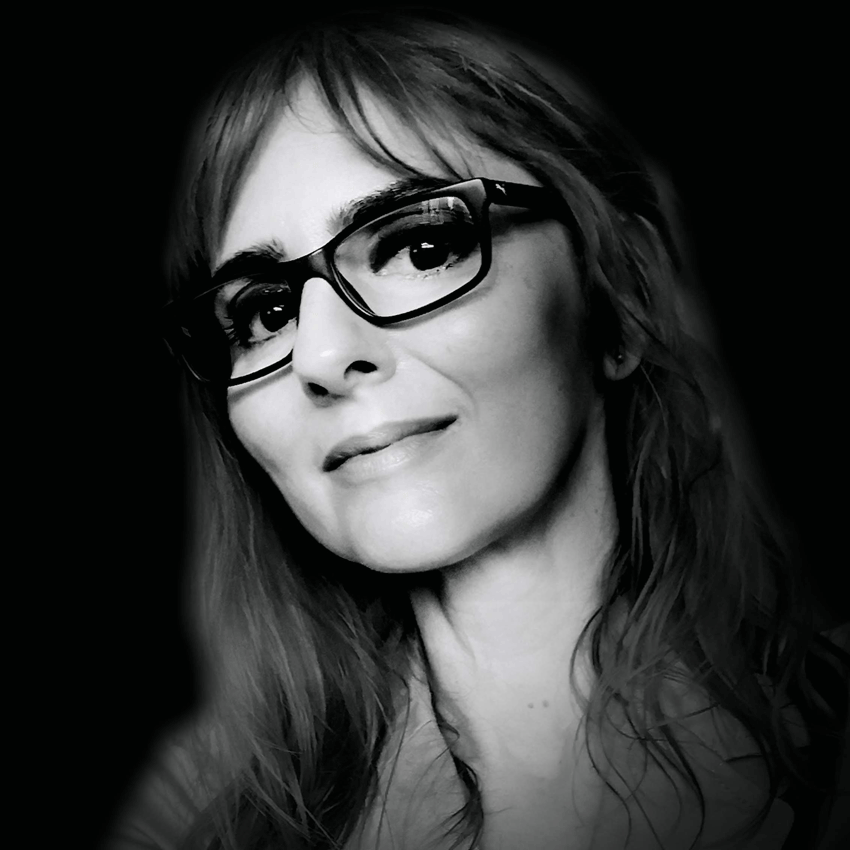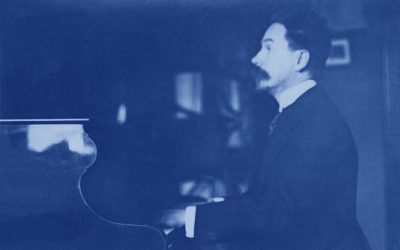MULTIDISCIPLINARY VIRTUAL INSTALLATION

By Mirna Rudan Lisak, PhD
Oct 10, 2014
Synthesis of Scriabin, Jawlensky and Pogorelich in a virtual installation
In my doctoral research, which I conducted at the Zagreb Arts Academy from October 2010 to June 2013, the analysis of artistic achievements of the composer Alexander Scriabin, painter Alexej Jawlensky and pianist Ivo Pogorelich was an introduction to my practical work. I was aiming to synthesize knowledge gained from five branches of art (painting, music, literature, architecture and dance), but also from art theory and philosophy, as well as from science. The transfer of knowledge led me to a better understanding of art and numerous artistic practices, and helped me build the concept of my own artwork as the final dialectical synthesis and the completion of my research. Thus, in the abstract virtual space, a multidisciplinary light installation was created—it was designed for Pogorelich’s performance of Scriabin’s piano pieces, with a simultaneous projection of Jawlensky’s painting series entitled Abstract Heads.
Multidisciplinary virtual light installation designed during my doctoral studies at the Zagreb Arts Academy
Meeting of painting and music at THE common platform
I studied these previously unrelated artists (Scriabin, Jawlensky and Pogorelich) and their work together, hoping to arrive at the common platform where I think painting and music meet. Thus, my installation purports to show the productive aspects of reproductive art and is built as a counterpoint to independent ideas interacting in a common thought structure. It is set up on Lake Lugano, which is not a mere coincidence when we know that all three artists began showing a growing interest in abstraction in Switzerland. Furthermore, my 3D multimedia projection sets up Scriabin’s serialism in music in space, and the pictorial serialism of Jawlensky is presented so as to show how it occupies time. Simultaneously, I achieve a sense of simulated motion through a system of lasers responding to Pogorelich’s changing body gravity. The lasers are my interpretation of Scriabin’s colour system, taking as their basis the quint circle and Isaac Newton’s optics. As this project will not in actuality be played out so that real people could in reality assume their assigned roles, as a multidisciplinary author I am responsible for the entire creative input. The visual content and computer projection are accompanied by my own performance of Scriabin’s composition for the piano Feuillet d’album, Op. 58. Originally, however, the installation was designed for Pogorelich’s performance of Scriabin’s piano pieces.
“After the screening at the Zagreb Arts Academy, I did not want my video-work to end up in an archive room.”
Screening at the International Experimental Video-Art Festival
After the screening at the Zagreb Arts Academy, I did not want my video-work to end up in an archive room. This is why I was thrilled when International ArtExpo, in collaboration with MECA (Mediterráneo Centro Artístico), selected my installation for the presentation during the International Experimental Video-Art Festival Pixels of Identities. In October 2014, it was held in the Museum of the City of Almeria in Spain. The Museum won two awards in 2004 (PAD and ARCO), and in 2005 the museum building was a finalist in the Fostering Arts and Design (FAD) Awards. Also, in 2008 it won an honorary prize in the European Museum of the Year competition (organized by the European Museum Forum), and as a public institution which was founded in 1934, in 2014 it celebrated its 80th anniversary. During the celebration, my light installation was projected.
Interview for ITSLIQUID
Just when I thought that this virtual journey had the best possible ending, shortly before the closure of the festival, the organizer’s partner, ITSLIQUID (International Platform for Contemporary Art, Architecture and Design), approached me and asked for an interview, so that the public would be permanently introduced to my work.
“In my installation, Abstract Heads blend into one another to show that serial painting takes on a temporal dimension in addition to the spatial one, despite Vassily Kandinsky’s claim that painting, unlike music, is not provided with this possibility.”
“In my installation, Abstract Heads blend into one another to show that serial painting takes on a temporal dimension in addition to the spatial one, despite Vassily Kandinsky’s claim that painting, unlike music, is not provided with this possibility.”
Interview for ITSLIQUID
Just when I thought that this virtual journey had the best possible ending, shortly before the closure of the festival, the organizer’s partner, ITSLIQUID (International Platform for Contemporary Art, Architecture and Design), approached me and asked for an interview, so that the public would be permanently introduced to my work.
You may also like our other publications…
Translation of Igor Belza’s book on Scriabin
The book ”Alexander Nikolayevich Scriabin” written by Igor Belza was translated from Russian into Croatian and published by the Mala zvona publishing house
Book entitled “Abstract Reproductive as Productive Art”
First book in Croatia on Scriabin; subtitle: Chromatic fantasies of the composer A. Scriabin, painter A. Jawlensky and pianist I. Pogorelich
How I met Alexander Serafimovich Scriabin
Prof. Božo Kovačević, former Ambassador of the Republic of Croatia to the Russian Federation, writes about his friendship with Scriabin’s descendant
Translation of Igor Belza’s book on Scriabin
The book ”Alexander Nikolayevich Scriabin” written by Igor Belza was translated from Russian into Croatian and published by the Mala zvona publishing house
Book entitled “Abstract Reproductive as Productive Art”
First book in Croatia on Scriabin; subtitle: Chromatic fantasies of the composer A. Scriabin, painter A. Jawlensky and pianist I. Pogorelich
How I met Alexander Serafimovich Scriabin
Prof. Božo Kovačević, former Ambassador of the Republic of Croatia to the Russian Federation, writes about his friendship with Scriabin’s descendant
Valery Kastelsky and Scriabin’s Piano Sonata No. 7
R. Dalibaltayan about his Professor V. Kastelsky, one of the greatest pianists and pedagogues of the second half of the 20th century


